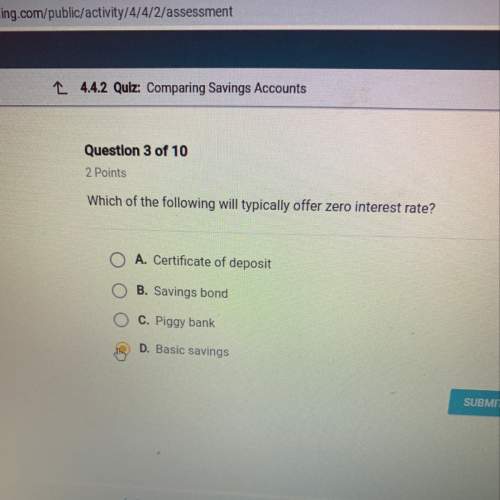
Business, 11.03.2020 22:19 lilwon9933
Star, Inc., a prominent consumer products firm, is debating whether or not to convert its all-equity capital structure to one that is 20 percent debt. Currently there are 17,000 shares outstanding and the price per share is $47. EBIT is expected to remain at $39,100 per year forever. The interest rate on new debt is 6.5 percent, and there are no taxes. Ms. Brown, a shareholder of the firm, owns 150 shares of stock. What is her cash flow under the current capital structure, assuming the firm has a dividend payout rate of 100 percent? What will Ms. Brown’s cash flow be under the proposed capital structure of the firm? Assume that she keeps all 150 of her shares. Assume that Ms. Brown unlevers her shares and re-creates the original capital structure. What is her cash flow now?

Answers: 3


Other questions on the subject: Business

Business, 21.06.2019 13:30, lovelysoul4698
The outstanding bonds of the purple fiddle are priced at $898 and mature in nine years. these bonds have a 6 percent coupon and pay interest annually. the firm's tax rate is 35 percent. what is the firm's after tax cost of debt?
Answers: 3

Business, 22.06.2019 19:50, alexdziob01
Right medical introduced a new implant that carries a five-year warranty against manufacturer’s defects. based on industry experience with similar product introductions, warranty costs are expected to approximate 2% of sales. sales were $8 million and actual warranty expenditures were $42,750 for the first year of selling the product. what amount (if any) should right report as a liability at the end of the year?
Answers: 2

Business, 22.06.2019 20:10, boofpack9775
As the inventor of hypertension medication, onesure pharmaceuticals (osp) inc. was able to reap the benefits of economies of scale due to a large consumer demand for the drug. even when competitors later developed similar drugs after the expiry of osp's patents, regular users did not want to switch because they were concerned about possible side effects. which of the following benefits does this scenario best illustrate? a. first-mover advantages b. social benefits c. network externalities d. fringe benefits
Answers: 3
You know the right answer?
Star, Inc., a prominent consumer products firm, is debating whether or not to convert its all-equity...
Questions in other subjects:





Physics, 03.07.2019 09:30


History, 03.07.2019 09:30

Mathematics, 03.07.2019 09:30

English, 03.07.2019 09:30





